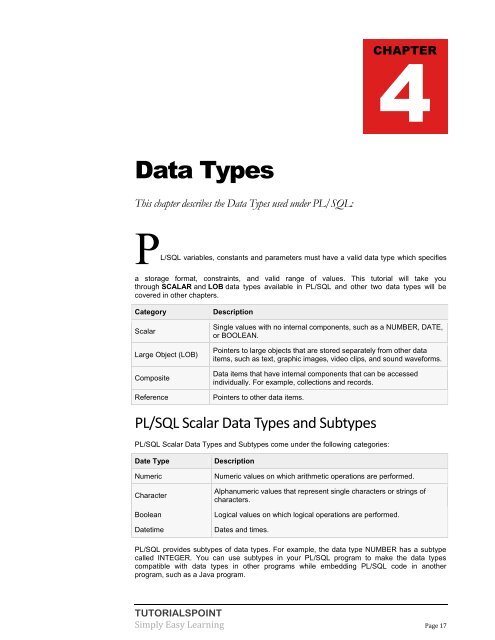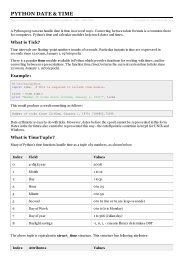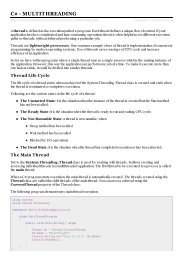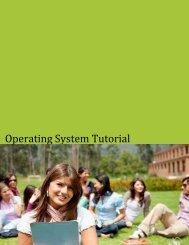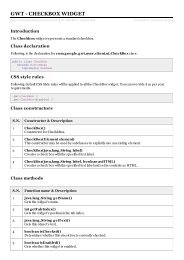download pl/sql tutorial (pdf - Tutorials Point
download pl/sql tutorial (pdf - Tutorials Point
download pl/sql tutorial (pdf - Tutorials Point
You also want an ePaper? Increase the reach of your titles
YUMPU automatically turns print PDFs into web optimized ePapers that Google loves.
CHAPTER<br />
4<br />
Data Types<br />
This chapter describes the Data Types used under PL/SQL:<br />
PL/SQL variables, constants and parameters must have a valid data type which specifies<br />
a storage format, constraints, and valid range of values. This <strong>tutorial</strong> will take you<br />
through SCALAR and LOB data types available in PL/SQL and other two data types will be<br />
covered in other chapters.<br />
Category<br />
Scalar<br />
Large Object (LOB)<br />
Composite<br />
Reference<br />
Description<br />
Single values with no internal components, such as a NUMBER, DATE,<br />
or BOOLEAN.<br />
<strong>Point</strong>ers to large objects that are stored separately from other data<br />
items, such as text, graphic images, video clips, and sound waveforms.<br />
Data items that have internal components that can be accessed<br />
individually. For exam<strong>pl</strong>e, collections and records.<br />
<strong>Point</strong>ers to other data items.<br />
PL/SQL Scalar Data Types and Subtypes<br />
PL/SQL Scalar Data Types and Subtypes come under the following categories:<br />
Date Type<br />
Numeric<br />
Character<br />
Boolean<br />
Datetime<br />
Description<br />
Numeric values on which arithmetic operations are performed.<br />
Alphanumeric values that represent single characters or strings of<br />
characters.<br />
Logical values on which logical operations are performed.<br />
Dates and times.<br />
PL/SQL provides subtypes of data types. For exam<strong>pl</strong>e, the data type NUMBER has a subtype<br />
called INTEGER. You can use subtypes in your PL/SQL program to make the data types<br />
compatible with data types in other programs while embedding PL/SQL code in another<br />
program, such as a Java program.<br />
TUTORIALSPOINT<br />
Sim<strong>pl</strong>y Easy Learning Page 17


